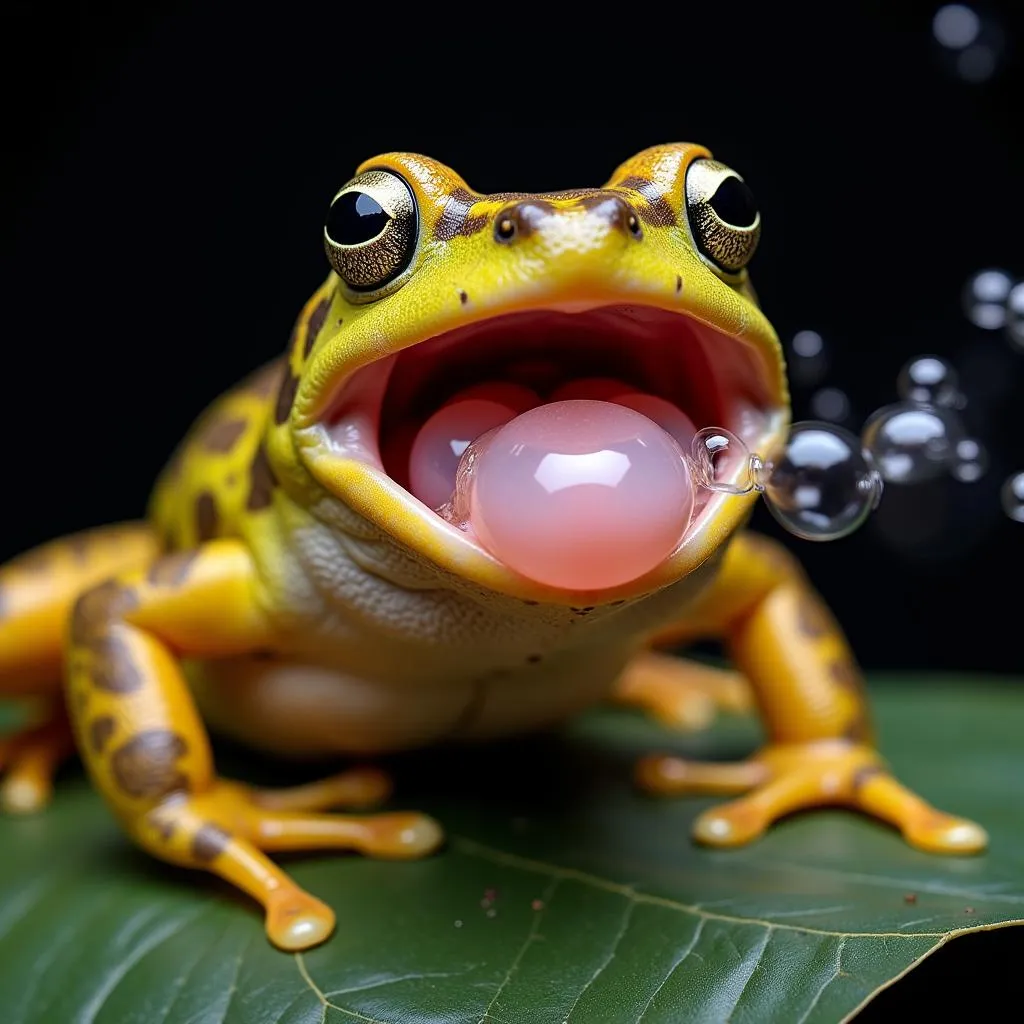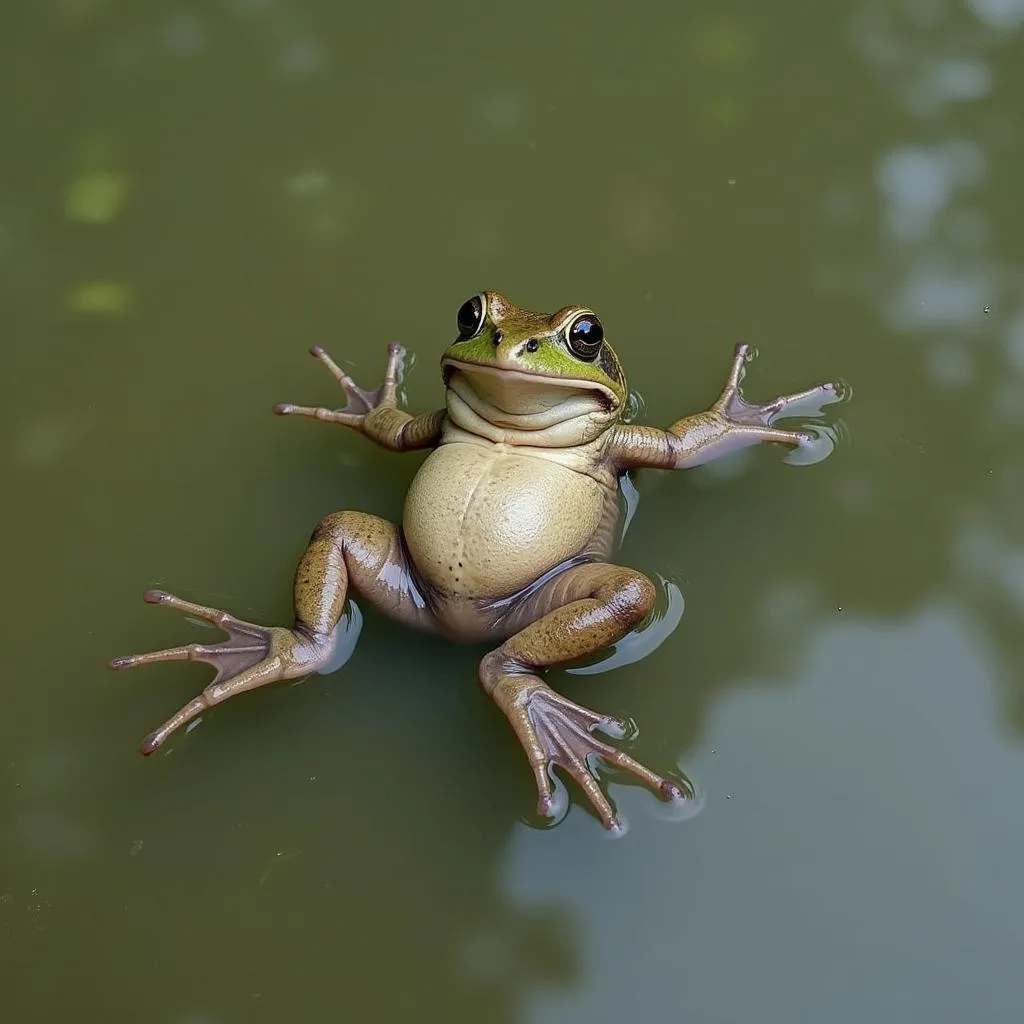Understanding African Dwarf Frog Behavior
African dwarf frogs, those tiny amphibians with big personalities, are quickly becoming a favorite among aquarium enthusiasts. Native to the slow-moving, warm waters of Central and Southern Africa, these fully aquatic frogs are known for their comical antics and peaceful nature. But have you ever wondered what’s going on beneath the surface of their watery world? Delving into the fascinating world of African Dwarf Frog Behavior can enhance your appreciation for these unique creatures and help you provide the best care possible.
Decoding the Language of African Dwarf Frogs
While they might not speak our language, African dwarf frogs communicate in their own fascinating ways. Understanding their subtle cues and behaviors can help you decipher their underwater conversations.
The Art of the Swim Bladder: Croaking and Chirping
Unlike their terrestrial cousins, African dwarf frogs don’t croak through vocal cords. Instead, they use their swim bladders to produce a range of chirps, clicks, and humming sounds. While often too high-pitched for humans to hear, these sounds play a vital role in communication, especially during mating rituals.
 African Dwarf Frog Vocalizing
African Dwarf Frog Vocalizing
A Symphony of Movements: Body Language Tells All
African dwarf frogs are masters of nonverbal communication, relying on a variety of body movements to convey their messages. From playful nips to warning postures, here’s a glimpse into their silent vocabulary:
-
The “Squeeze:” This behavior, often mistaken for distress, is a natural part of an African dwarf frog’s life. They squeeze themselves through tight spaces, mimicking their natural environment where they seek refuge in dense vegetation.
-
The “Dead Man’s Float:” Don’t be alarmed if you see your frog floating with its limbs extended. This peculiar behavior, also known as “surfing,” is simply a way for them to conserve energy and relax.
 African Dwarf Frog "Dead Man's Float"
African Dwarf Frog "Dead Man's Float"
-
The “Backstroke:” If your frog propels itself backward with its hind legs, it’s not lost or confused. This backstroke is a common way for them to navigate their surroundings and explore their tank.
-
The “Glass Surfing:” While alarming to witness, occasional glass surfing, where the frog frantically swims up and down the tank walls, is usually a sign of stress or boredom.
Social Interactions: A Harmony of Hops and Nips
African dwarf frogs are social creatures, thriving in groups of three or more. While generally peaceful, their interactions can sometimes involve playful nips and chases, especially during feeding time. These behaviors are part of their natural social hierarchy and usually nothing to be concerned about.
FAQs About African Dwarf Frog Behavior
Q: Why is my African dwarf frog always at the top of the tank?
A: African dwarf frogs need to surface to breathe air, so it’s perfectly normal to see them hanging out at the top of the tank. However, if your frog is constantly at the surface and gasping for air, it could be a sign of poor water quality or an underlying health issue.
Q: Why is my African dwarf frog shedding its skin?
A: Like other amphibians, African dwarf frogs shed their skin periodically as they grow. This is a natural process and nothing to be worried about.
Q: Are African dwarf frogs aggressive?
A: African dwarf frogs are generally peaceful and social creatures. However, they might exhibit playful nipping and chasing, especially during feeding time.
Q: Why is my African dwarf frog making clicking noises?
A: African dwarf frogs use their swim bladders to produce a variety of chirps, clicks, and humming sounds, often during mating rituals.
 African Dwarf Frogs Interacting
African Dwarf Frogs Interacting
Q: Can I keep African dwarf frogs with other fish?
A: While African dwarf frogs can coexist with some peaceful fish species, it’s essential to choose tank mates carefully and ensure they have similar water parameter requirements.
For more information about creating a harmonious aquarium environment for your African dwarf frogs, check out our articles on African clawed frog tank mates and African aquarium fish species.
Creating a Happy Home for Your African Dwarf Frogs
By understanding the nuances of African dwarf frog behavior, you can create an enriching environment where they can thrive. Providing them with ample hiding spots, a varied diet, and clean, well-oxygenated water will keep your aquatic companions happy and healthy for years to come. If you’re considering adding these fascinating creatures to your home, be sure to explore our resources on African dwarf frog squeezing and African dwarf frog petsmart to learn more about their unique needs and care requirements.
Remember, observing and interpreting your African dwarf frog’s behavior is key to ensuring their well-being. By paying attention to their silent language, you can create a thriving aquatic world that fosters their natural instincts and allows their quirky personalities to shine.
Need additional support or have more questions? Reach out to our team of experts at +255768904061 or [email protected]. We’re available 24/7 to assist you. You can also visit us at our location in Mbarali DC Mawindi, Kangaga, Tanzania.
